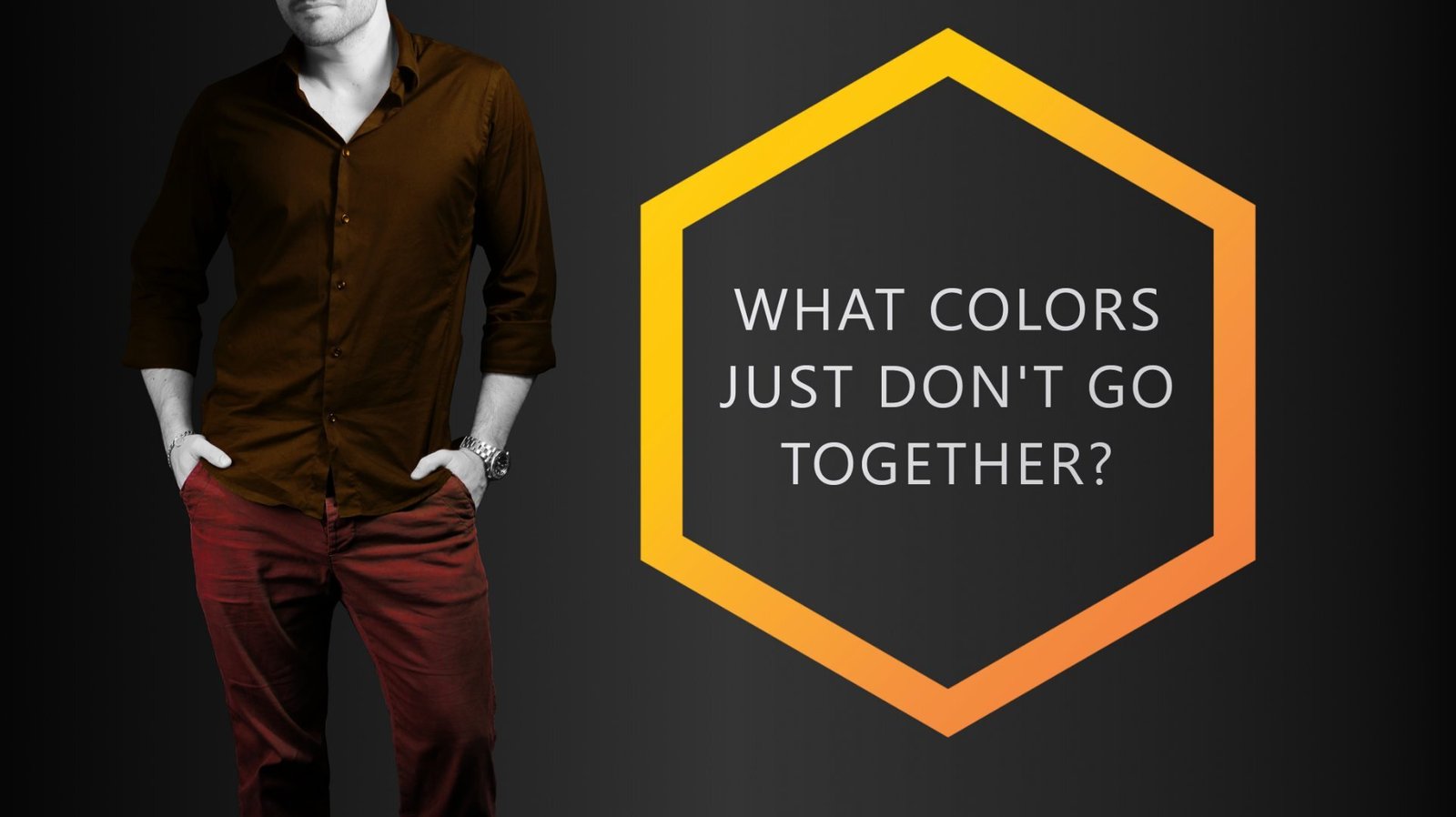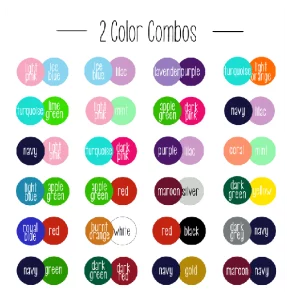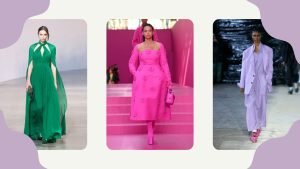Have you ever glanced at someone’s outfit and wondered, What were they thinking? Well, my fashion-forward friend, you are not alone. We’ve all witnessed fashion mishaps that make us question the very existence of a person’s color coordination skills. But fear not! In this article, we will delve deep into the world of colors and uncover the combinations that should never grace your wardrobe. So buckle up and get ready for a colorful adventure filled with tips on what colors to avoid wearing together!
Complementary Colors:
Understanding the basics of complementary colors is essential when it comes to creating visually appealing and harmonious color combinations. Complementary colors are pairs of colors that are opposite each other on the color wheel, such as red and green, blue and orange, or purple and yellow. They create a striking contrast when placed next to each other, making both colors appear more vibrant and intense.
Beyond their visual impact, understanding complementary colors can also help you make informed decisions about what not to wear together. When two complementary colors are placed side by side in an outfit, they can clash with each other and create a jarring effect. For example, wearing a bright red top with a vivid green skirt may be overwhelming for the eyes as these colors fight for attention. To avoid such conflicts, it’s best to pair complementary colors together in small accents rather than using them as dominant hues in your ensemble.
Clashing Colors:
Avoiding clashing colors is a must if you want to make a stylish statement. One combination you should steer clear of is red and green. While these two colors might remind you of Christmas, when worn together, they can create an overwhelming clash that is definitely not season-appropriate. Another color combo to avoid is orange and purple. These bold and vibrant hues may seem like they would work well together, but the contrasting warm and cool tones can create a visually jarring effect.
Similarly, pink and yellow are another pair that should not be seen side by side in your outfit choices. The softness of pink clashes with the brightness of yellow, resulting in an unbalanced look. On the opposite end of the spectrum, black and navy blue may seem like a safe bet for combining dark colors but beware; their close proximity can result in an indistinguishable muddy appearance rather than a sleek or polished aesthetic. Ultimately, being mindful of color combinations ensures that your outfit truly speaks volumes without causing any visual discordance along the way.
The Psychology Of Color:
Color psychology plays a significant role in our everyday lives, from influencing our emotions to impacting our decision-making processes. But did you know that it also has a powerful effect on how we coordinate and style our outfits? The right color combination can make us feel confident, vibrant, and put-together, while the wrong combination can leave us feeling dissonant and disconnected.
- One of the key factors to consider when choosing colors for your outfit is contrast. Combining highly contrasting colors like black and white creates a visually striking look that demands attention. On the other hand, pairing analogous colors like blue and green creates a harmonious and peaceful vibe. Understanding how different colors interact with each other can help you create an outfit that conveys the message you want to send.
- Another important aspect to consider is individual skin tone and undertones. Certain colors may enhance your complexion while others may wash you out or create an unflattering effect. Warm skin tones tend to complement earthy tones such as olive green or burnt orange, while cool skin tones often look great in jewel-toned hues like sapphire blue or emerald green. Experimenting with different color combinations based on your unique skin tone not only helps you put together stylish outfits but also highlights your best features.
Creating Harmonious Looks:
- One of the keys to creating harmonious looks is to understand complementary and contrasting colors. Complementary colors are opposite to each other on the color wheel and when combined, they create a visually appealing contrast. For example, blue and orange or yellow and purple are complementary colors that can be paired together for an eye-catching outfit. Contrasting colors, on the other hand, are found next to each other on the color wheel and provide a softer contrast. Think pink paired with red or green combined with yellow-green.
- Another trick to creating harmonious looks is by using the 60-30-10 rule. This rule suggests using three main colors in your outfit: one dominant color that takes up about 60% of your look, a secondary color that makes up 30%, and an accent color that takes up just 10%. By following this rule, you can ensure that your outfit has balance while adding visual interest.
- Additionally, don’t underestimate the power of neutrals in creating harmonious looks. Neutrals like black, white, gray, beige, or tan can be used as a base for any outfit as they go well with almost any color combination. They help balance out brighter hues and create a cohesive look without overwhelming the eyes.
Seasonal Considerations:
When it comes to choosing colors for different times of the year, it’s essential to consider seasonal shifts. In spring and summer, vibrant and cheerful shades like pastels or bold neons create a refreshing contrast against the blooming flora. These months provide an excellent opportunity to experiment with bright color combinations that evoke feelings of energy and happiness.
On the other hand, fall and winter call for deeper, earthy hues reminiscent of nature’s transformation. Rich jewel tones like emerald green, deep purple, or warm burgundy can add depth and sophistication to your wardrobe during these months. Pairing these colors with neutrals like camel or beige creates a balanced look that’s both stylish and cozy for the colder days.
Conclusion:
In conclusion, color coordination plays a crucial role in dressing with confidence. By understanding which colors work harmoniously together and avoiding combinations that clash, you can ensure that your outfit exudes a sense of intention and style. Remember that when it comes to color, less is often more; the key is to select one or two main colors and then incorporate neutral tones to balance the look.
Furthermore, color can also have an impact on how others perceive us. Studies have shown that certain colors evoke specific emotions and convey different meanings. For example, wearing deep shades of blue can project a sense of calmness and dependability, while vibrant reds tend to communicate energy and power. By consciously choosing your colors based on how you want to be perceived, you can use clothing as a tool for boosting your self-confidence.
Ultimately, the art of color coordination extends beyond just matchy-matchy outfits; it’s about being aware of the psychology behind each hue and harnessing its potential to uplift both yourself and those around you. Whether you opt for bold pops of color or subtle tonal variations, remember that confidence is ultimately derived from feeling comfortable in your own skin – so don’t be afraid to experiment with different combinations until you find the ones that make you feel most empowered. Happy styling!






Be First to Comment